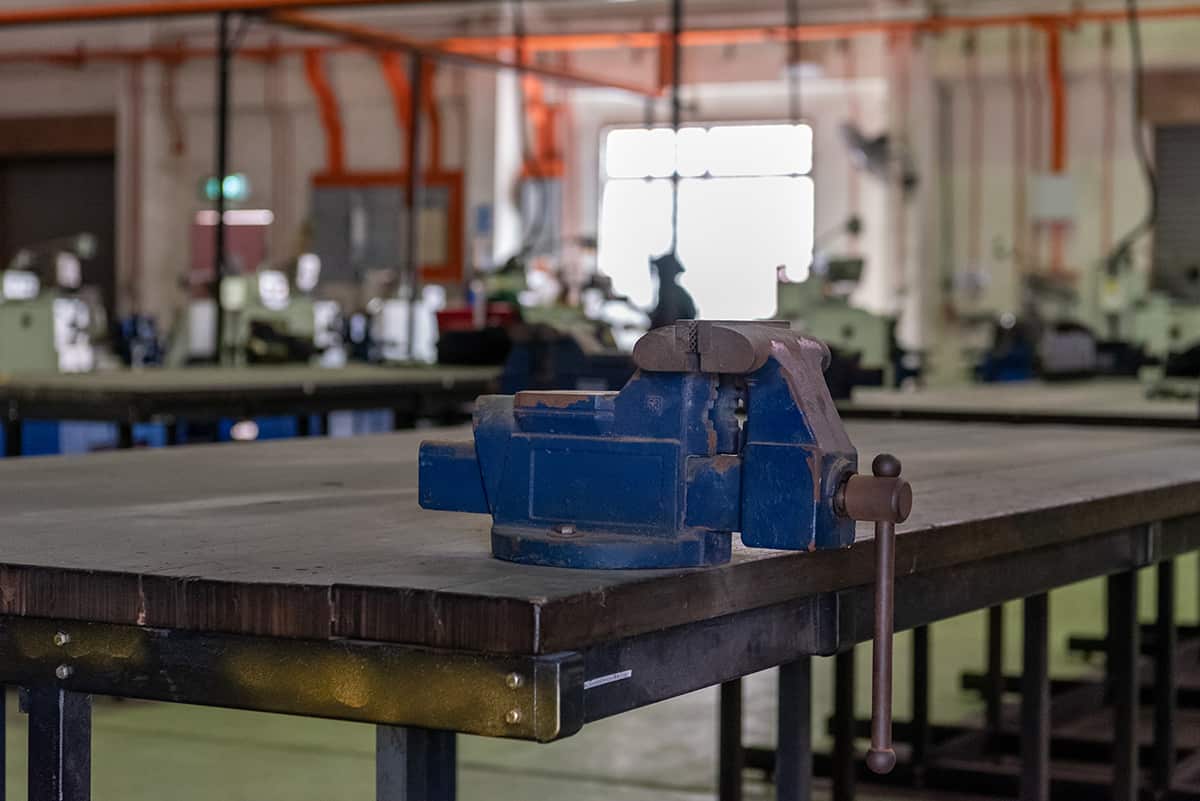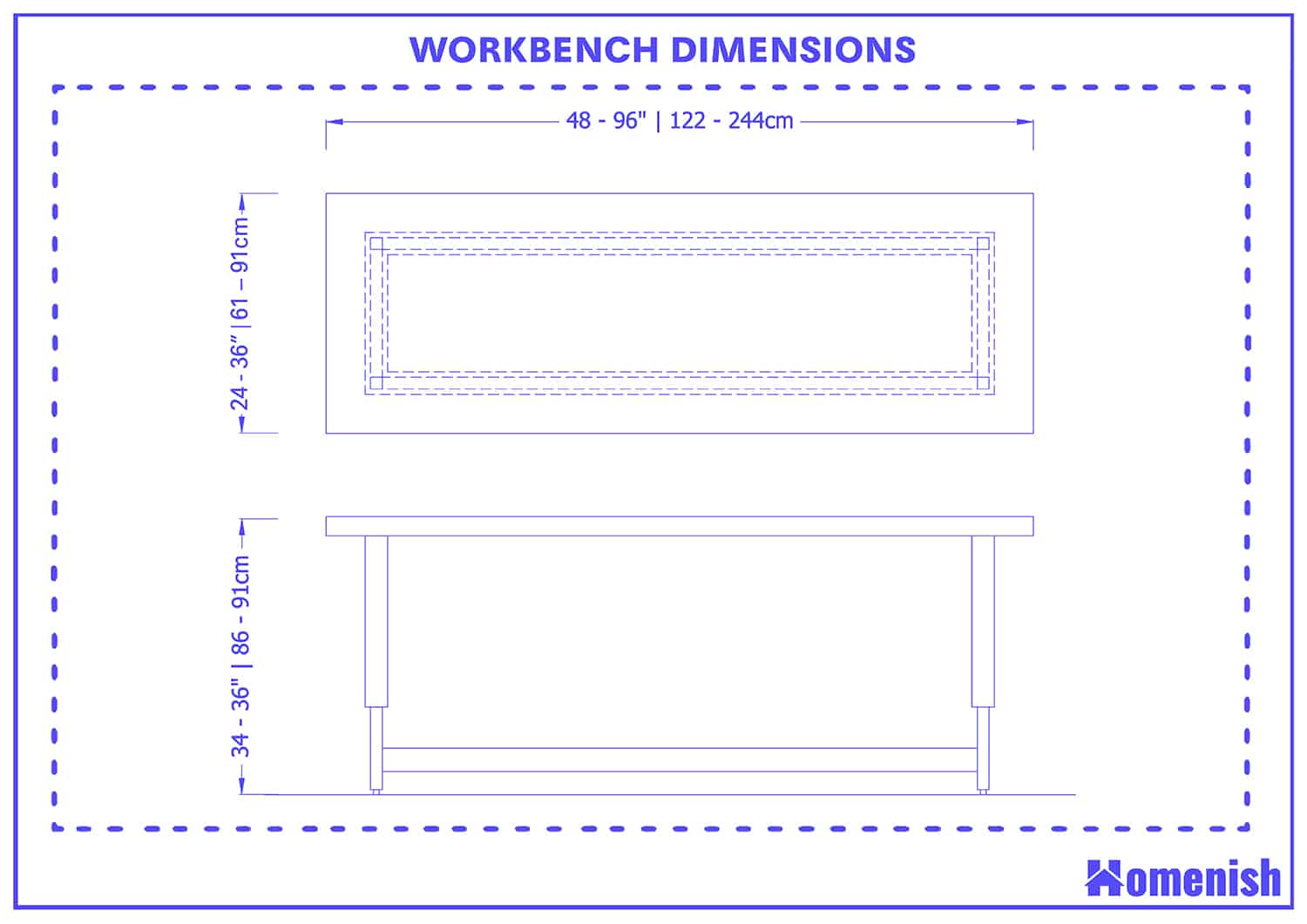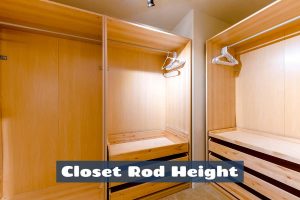Having your own workbench in your garage is a necessity rather than a luxury for those of us who spend our spare time working on DIY projects.
If you are looking for a new workbench to buy, or you’re thinking of building your own, then knowing which are the best dimensions for a workbench is going to be useful.
Typically, a standard workbench will have a height of 34 – 36 inches, a depth of 24 – 36 inches, and a length of between 48 inches to 96 inches.
See the drawing below for easy understanding.
Workbench Height
The height of a workbench is probably the most important measurement to ensure you can work effectively at your workstation without compromising on comfort. Keep in mind that a workbench is typically a table where people do most of the work, like woodworking and constructing on it, not a chair to sit on like the standard bench.
So The standard height of a workbench ranges between 34 inches and 36 inches because this is a height that typically works for people of average height.
However, if you are a little shorter or taller than average, then you might want to adjust the height of your workbench accordingly. The type of tools you use can also affect the best height for you.
If you primarily use power tools and want the pieces you are working on to be closer so that you have better vision over them, then you could raise the height of your workbench by a few inches.
However, if you primarily use hand tools, then you might want your bench to be a little lower so that you can harness the power of your weight over them.
If you use both power and hand tools equally, then instead base the height of your workbench on your own body. Measure the height at which your wrists naturally fall when your arms are resting at your side while standing.
This will be a good height for your workbench, providing both comfort and functionality for working on most projects.
Workbench Depth
The ideal depth of a workbench is a measurement that is disputed by many people. Some feel that the workbench should not be any deeper than you can reasonably reach with your arm in order to allow you easy access to anything on the workbench. This would mean the depth of the workbench would be around 24 inches.
However, some people prefer a deeper workbench, so that is space for storage at the back of the bench or more room to work on bigger projects. The maximum depth on a workbench that you can typically expect to see is around 36 inches, but of course, if you are building your own workbench, then you can customize this size so that it works for your purposes.
The size of space you have available is also going to be a big factor when deciding on a depth measurement for a workbench. If you are installing a workbench in your garage, then you may want to still be able to accommodate your vehicle or have storage space for other items such as a lawnmower, snow blower, or bicycles.
If this is the case, measure the space you have available for the workbench depth while also taking into account the fact that you will need to comfortably be able to maneuver past it, as well as potentially carry tools and materials past it.
Workbench Length
The length of the workbench is not going to affect your comfort like the height and depth will, but it is going to affect how much space you have for your projects. Most standard workbenches will range in length from 48 inches to 96 inches, which equates to between 4 feet and 8 feet. For many people, the amount of space you have available is going to dictate the length of workbench you can have.
If you are going to be using your workbench for a wide variety of projects, then you may want to get the longest workbench your space can accommodate.
If you are building a workbench, remember that the longer your bench is, the thicker the wood you use will need to be. This is so that the bench is strong and stable enough to fulfill its purpose.
You can expect that the bigger your bench is, the more materials you are going to need to build your bench, which will, of course, increase the amount of money you spend.
If you are trying to keep costs down, then a smaller workbench may work better.
Workbench Tips
Whether you are buying a workbench or building your own, there are tips you can use to help you make the right decision and get the workbench of your dreams.
Functionality over beauty
When choosing a workbench to buy, or building one from scratch yourself, don’t focus too much on what it looks like. Having a workbench that meets all of your practical needs will make life much easier than one that is aesthetically pleasing but lacks functionality.
Choose wood carefully
The type of wood you choose for the construction of your workbench is going to affect the strength, the durability, the longevity, the look, and the price of it. Consider which of these you deem as your priorities and choose your wood accordingly.
Customize to your needs
Your workbench is exactly that; YOUR workbench. It should be built exactly to suit your needs, store your tools, and allow you to work exactly as you want to. With this in mind, add custom parts or upgrades to your bench that are going to allow you to be more efficient.
If you use power tools frequently, then you might want to mount a power strip on the side of your workbench where you can plug-in tools to save you from trailing extension cords across the garage. A pegboard is always useful to fix behind your workbench for keeping tools and other items to hand.
You could think about installing a draw in your workbench to keep screws or nails or add a shelf to the underside of the workbench for extra storage.
You could also fix a vise to the side of your workbench to keep projects in place while you cut or sand them, or install a rule to the side of the workbench to help you measure.







